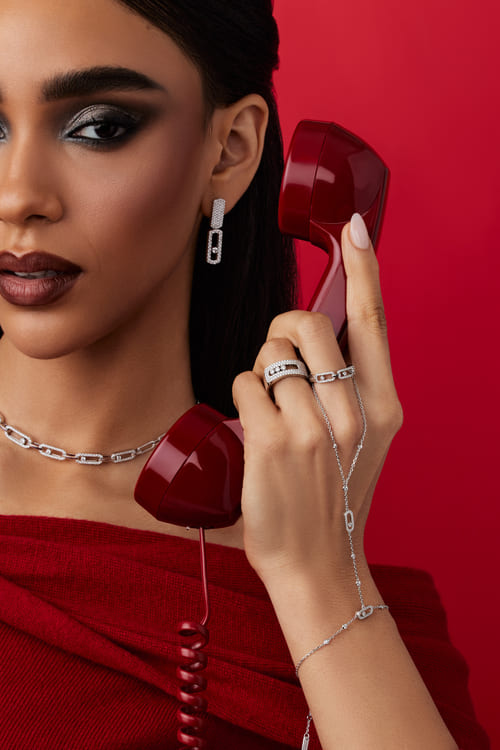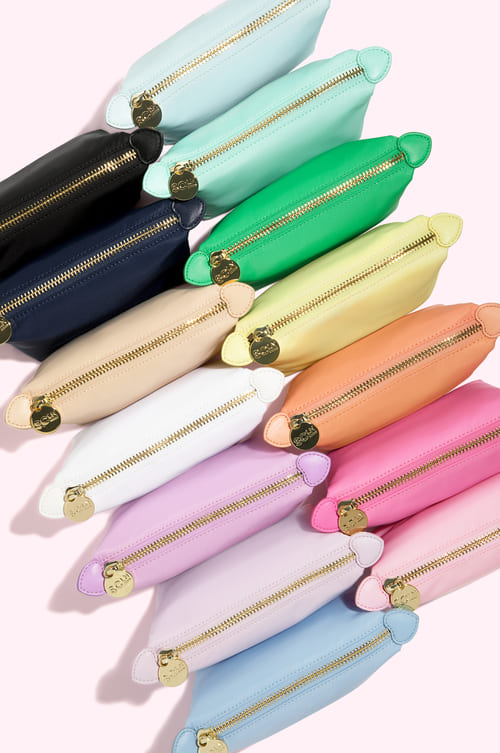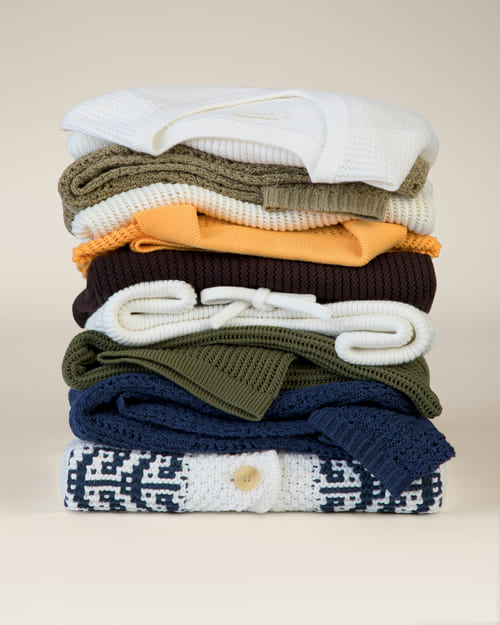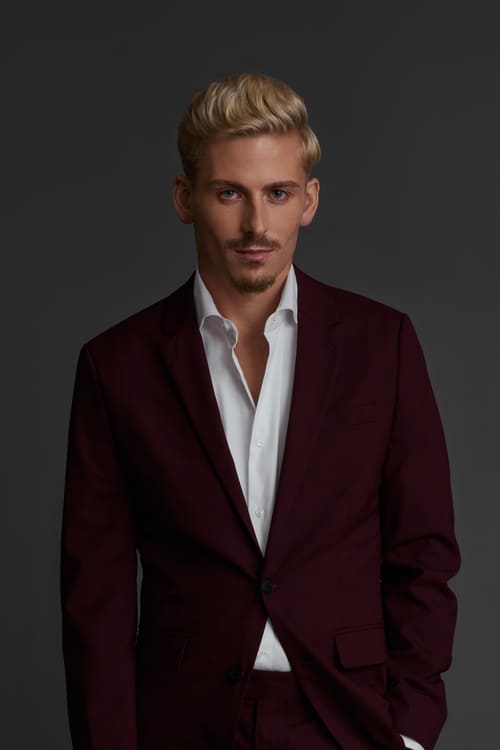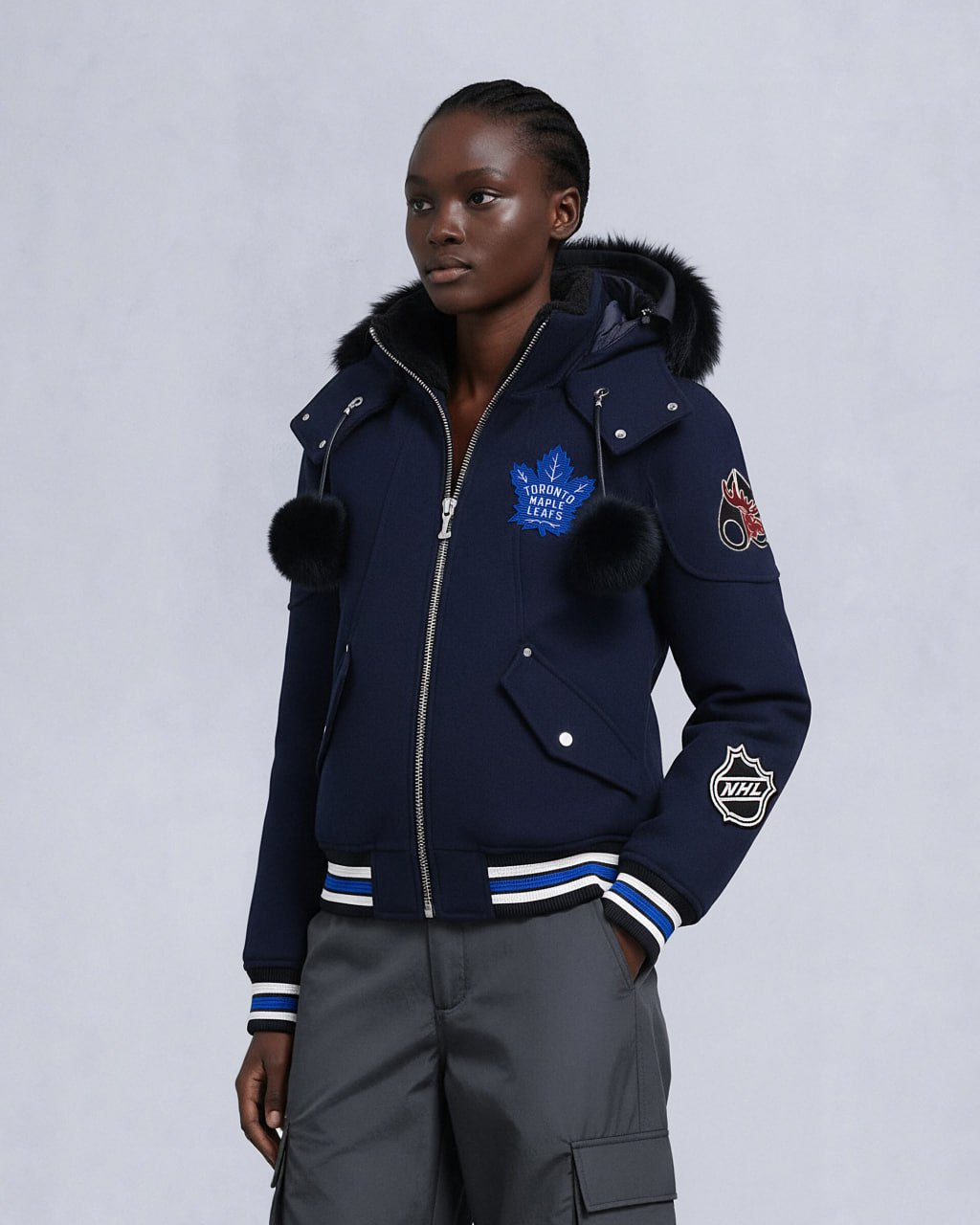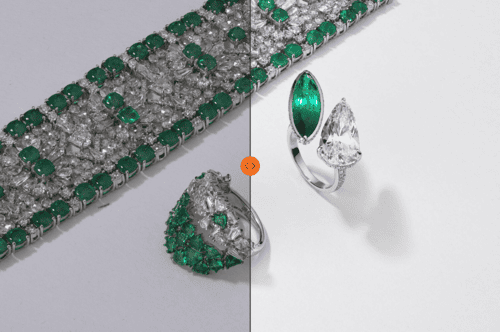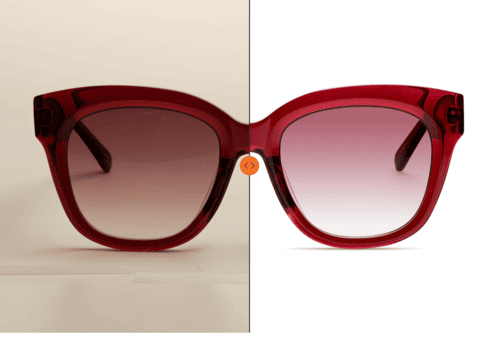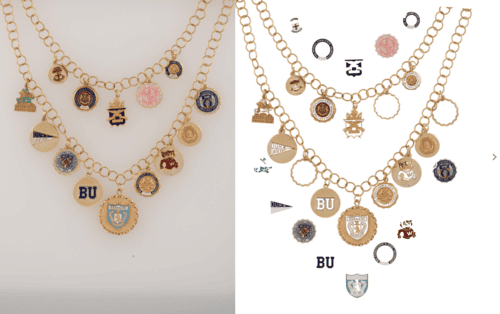Maximizing eCommerce Businesses Sales with Product Videos
Why Video is A Key Sales Driver in eCommerce
Videos have become a vital element in the eCommerce space. According to recent studies, product videos can increase conversion rates by up to 80%, making them one of the most effective tools for driving sales. This staggering statistic highlights how crucial video content has become in industries like fashion, beauty, and jewelry, where visual appeal plays a significant role in purchasing decisions.
The rise of video content as a key driver of online sales stems from its ability to capture attention, showcase product details more effectively than images, and build an emotional connection with consumers. It’s no wonder more eCommerce brands are turning to video to boost engagement and sales.
In this article, we will explore:
- Why video marketing is a must for eCommerce brands
- The different types of product videos and where they shine
- How to plan a commercial video shoot like a pro
- The power of storytelling in video and how it drives sales
- How to choose the right studio partner for your video production needs

The Power of Video Marketing for eCommerce Brands
What makes video marketing so powerful? You’ve probably heard that video content is great for engagement, but here’s the deal: it’s more than just pretty pictures in motion. Video connects with people on a deeper level. When customers see a product in action, they’re able to picture themselves using it, which speeds up the buying process.
Think of big brands like Nike and ASOS. Nike uses high-energy, short-form outdoor videos to bring their products to life on social media, while ASOS creates editorial-style videos to show off how clothes look when worn in a studio environment. Both have mastered the art of video marketing, and their sales numbers speak for themselves.
In fact, studies show that people are 64% more likely to buy a product after watching a video. Why? Because it’s easier to understand a product when you see all of its dimensions in movement, regardless of whether the product is being dynamically presented or if it is shown in use. . That’s the beauty of video: it takes away the guesswork. Instead of wondering how a jacket fits or how a skincare product works, your customers get a front-row seat to the product experience.
Types of eCommerce Videos Explained
Let’s dig into the different types of eCommerce videos and what they bring to the table. Each one serves a specific purpose in your marketing strategy, so it’s all about using the right video at the right time.
E-commerce Product Videos
E-commerce product videos focus on showcasing your product’s key features in a straightforward, visually engaging way. These videos highlight the product dynamically, offering a 360-degree view or zooming in on important details. They are perfect for giving customers the information they need to make an informed purchase. Keep it simple but detailed, making sure to show the product from all relevant angles and in various scenarios of use.
Best Use: Fashion, beauty, tech products, home and decor, and jewelry.
Stop Motion Videos
Stop motion videos use a series of photographs stitched together to create an animated effect. These videos are engaging and fun, adding a playful, creative twist to your product showcases. Stop motion is especially useful for products with multiple components or assembly processes, as it breaks down the action frame by frame. Keep stop motion videos short and sweet, emphasizing movement and detail to keep the viewer engaged.
Best Use Cases: Kids’ products, beauty, jewelry, tech, and accessories.
360 Spin Product Videos: Let Your Customers See Every Angle
360 spin videos are like putting your product in the customer’s hands without them ever leaving home. By allowing them to view the product from every angle, you're essentially recreating the in-store experience. This format helps to overcome one of the biggest hurdles in eCommerce — bridging the sensory gap between physical and online shopping.
For example, if you’re selling a high-end handbag or piece of jewelry, a high-quality 360-degree video allows shoppers to inspect every detail, from stitching to clasp design, providing a much clearer representation than photos alone. These videos build trust, which is critical when customers can’t physically interact with your product.
Best Use: Jewelry, footwear, accessories, home decor, and any product where details matter.
Creative Commercial Videos: Tell a Story, Sell a Brand
Creative videos allow brands to tell a story around their products in a more artistic or narrative-driven way. These videos are perfect for campaigns where you want to evoke emotion, convey a lifestyle, or communicate brand values. Creative videos often blend product placement or use with a broader narrative that resonates with the viewer’s emotions. Use these videos to showcase the product in context — whether it’s a fashion piece in everyday life or a beauty product enhancing someone’s routine.
Best Use: New product launches, brand awareness campaigns, or lifestyle-driven products.
Short-Format Videos for Social Media
Short-format videos are ideal for platforms like Instagram Reels, TikTok, and Pinterest, where attention spans are short, and content needs to be quick and engaging. These videos are typically under 60 seconds and are designed to capture attention instantly with snappy visuals and concise messaging.
The production process for these videos is also unique. Unlike more polished, commercial productions, short-format videos for social media can often be shot using a mobile phone. This creates a more authentic and approachable feel, which is exactly what social media audiences are looking for.
Producing these videos is also faster. With fewer production requirements, you can create large amounts of content just as social media platforms demand.
Best Use: Fashion, beauty, jewelry, tech, fitness, seasonal campaigns, product promotions, or behind-the-scenes content.
3D Animated Videos: Perfect for Complex or Abstract Products
When your product needs more than just real-life visuals to explain its features or functionality, 3D animation steps in. This video type is ideal for products with intricate designs or technologies that are hard to capture on camera. From luxury watches with detailed mechanisms to high-tech gadgets with internal components, 3D animation can break down these features visually and effectively.
For example, if you’re selling a watch with a unique mechanism, a 3D animated video can showcase how the inner gears work together, emphasizing craftsmanship and functionality in a way that static images can’t. These videos are particularly useful when selling complex items where consumers need a clear understanding of what makes your product unique.
Best Use: High-tech gadgets, complex machinery, luxury watches, or any product with detailed design.
Comparison Videos: Help Your Customers Decide
Comparison videos are all about helping customers make an informed choice, especially when they’re stuck between two or more options. These videos break down the differences between products, allowing customers to easily see what makes each item unique and how it aligns with their needs.
For instance, a beauty brand might use a comparison video to showcase the benefits of different skincare products. By highlighting key ingredients, texture, and use cases, the video helps the customer understand which product suits their skin type. This kind of clarity is invaluable for customers who might otherwise feel overwhelmed by the options available.
Best Use: Beauty products, electronics, and fashion items with multiple variations (e.g., colors, sizes, or styles) or similar functions.
Educational Videos: Building Trust Through Expertise
Educational videos do more than just showcase a product—they provide real value by teaching your audience something useful. These videos can range from product tutorials to broader "how-to" content that aligns with your brand’s expertise. For example, if you sell skincare products, an educational video might guide viewers through the best skincare routine for different skin types, using your products along the way.
Educational videos build brand authority and trust, positioning your company as a go-to resource in your industry. When customers feel like you’re helping them, they’re more likely to buy from you.
Best Use: Beauty, fashion, home goods, tech products.
Behind-the-Scenes (BTS) Videos: Humanize Your Brand
Behind-the-scenes (BTS) videos give your customers an inside look into your brand, showing them how your products are made or how your team operates. These videos humanize your brand, making it more relatable and transparent. Whether you're filming the creation of a new product or offering a sneak peek into a campaign photoshoot, BTS videos can build stronger connections with your audience.
For example, a jewelry brand might show the craftsmanship involved in hand-making a piece, from sketching the design to selecting the materials and assembling the final product. This type of content doesn’t just showcase the end result but the love and care that went into creating it.
Best Use: Fashion brands, beauty brands, or any brand that wants to build a more personal connection with its audience.
Commercial vs Short-Form Videos: What Works for eCommerce Brands?
Here’s a question all brands consider a lot: Should we focus on commercial or short-form social media videos? The answer is — it depends. Let’s break it down:
Choosing the Right Video Format for Your Brand
Commercial videos are great for telling a complete story. These are the types of videos you’d use for a big product launch or campaign. They tend to be longer and packed with more information because usually customers who are watching these vids are already considering your brand and your products or are interested in your brand’s story, narrative, and behind-the-scenes world. But if you’re looking to capture attention fast (especially on social media), short-form videos are the way to go. Think Instagram Reels, TikTok, or even short YouTube ads. The key is knowing when to use each.
Platform-Specific eCommerce Video Content
Every platform has its sweet spot for video length. On Instagram and TikTok, you want to keep it under 60 seconds — quick, punchy, and to the point. For YouTube or your website, longer videos (around 2-3 minutes) are perfect for showing off product features or sharing your brand’s story. Under 60-second videos are also perfect for showcasing your products on website catalog pages.
Combining Short and Long-Form Videos for Maximum Reach
Don’t just stick to one format. Mixing short and long-form videos gives you the best of both worlds. Use short videos to tease a product and drive traffic to your website, where a longer commercial video can do the heavy lifting by explaining the details and sealing the deal.
How to Plan a Commercial Video Shoot for eCommerce Success
Planning a commercial video shoot for your eCommerce brand can seem overwhelming, but the key to success lies in careful preparation. A well-planned shoot ensures that you stay on budget, meet your deadlines, and ultimately create a video that aligns with your brand’s goals and vision. Here’s how to break it down step by step to make sure your shoot is a success.
Defining Your Video’s Purpose
The first step in planning any video shoot is to define your video’s purpose. This might sound obvious, but it’s easy to overlook how crucial it is to set clear objectives upfront. Ask yourself: what do you want this video to achieve? Do you want to showcase a new product, promote a seasonal campaign, increase brand awareness, or drive direct sales?
- Product Showcase: If the goal is to highlight the features of a product, your video should focus on the product itself—zooming in on details, functionality, and key benefits. For example, if you’re launching a new line of high-end watches, the video should show how the watch looks on a wrist. It should zoom in on the craftsmanship and highlight any unique features like water resistance or automatic movement.
- Brand Awareness: If your goal is to build brand awareness, the video needs to tell a broader story about who you are as a brand. A fashion brand might focus on the lifestyle or values it represents, such as sustainability, luxury, or versatility, rather than just the product itself.
- Seasonal Campaign or Sale: For seasonal promotions or sales, the video should create urgency. For example, a video promoting a holiday sale might show a series of “limited-time offers” or create a festive, time-sensitive atmosphere.
- Clearly defining your purpose will guide every other decision you make during the production process, from the tone and style to the length and format.
Pro Tip: Always keep the customer in mind. Consider how this video will help them make a decision, whether it’s about buying a product or engaging more deeply with your brand.
Pre-Production Essentials for eCommerce Video Production
Once you’ve established the purpose, it’s time to dive into pre-production. This is where most of the planning happens, and getting this stage right can save you from costly mistakes down the road. Pre-production covers everything from budgeting to storyboarding and assembling your crew.
Budgeting: What Can You Afford?
The budget sets the framework for your entire production. It’s important to be realistic about what you can afford, whether you’re creating a simple product video or a full-scale commercial. Your budget should account for:
- Crew costs (director, videographer, assistants)
- Talent costs (models, actors, or influencers)
- Location fees (studio or outdoor settings)
- Equipment rental (cameras, lights, etc.)
- Post-production (editing, sound design and/or music composing, color grading)
Pro Tip: Budget for contingencies. Unexpected costs, such as reshoots or location changes, can quickly add up, so it’s a good idea to set aside a portion of your budget for unforeseen expenses.
Storyboarding: Your Roadmap to Success
A storyboard is essentially a visual roadmap for your video. It breaks down each scene, helping you visualize the flow of the video, plan the shots, and make sure nothing is left to chance. Storyboarding can also highlight any technical challenges you might face on set, giving you time to address them before the shoot.
For instance, if you’re creating a product showcase video, your storyboard might show the product from multiple angles, highlight key features, and include any special effects or close-ups you want to capture. If the video is focused on brand storytelling, the storyboard should reflect the key moments in the narrative, such as characters interacting with the product in real-life settings.
Pro Tip: Involve your entire team in the storyboarding process. Your director, stylists, and even the marketing team can provide valuable input that ensures the video is aligned with your brand vision.
Assembling the Right Creative Team
Your team is the backbone of your production, and the right crew can make all the difference. At a minimum, you’ll need:
- DOP (Director of Photography): Responsible for overseeing the shoot, and ensuring the creative vision is executed.
- Videographer/Cinematographer: Handles the technical side of shooting the video, including framing, lighting, and camera angles.
- Wardrobe Stylists, Hair Stylists, and Makeup Artists: For fashion or beauty shoots, these professionals ensure that the products—and models—look their best on camera.
- Models/Actors: If your video involves people, it’s crucial to select talent that aligns with your brand and can deliver the right on-screen presence.
Pro Tip: If you’re working with a tight budget, consider hiring a full-stack visual content studio with in-house talents and your final video will look polished and professional without high bills and time-consuming searches for a production team.
Managing Your Commercial Video Production Timeline
Without a well-structured schedule, you risk running into costly delays or losing sight of the creative direction. Here’s how to stay on track:
- Pre-Production Timeline: Allow enough time for research, brainstorming, and approvals before you even get to the shoot. This phase can take weeks, depending on the complexity of your video. Everything from scriptwriting to location scouting should be mapped out and confirmed.
- Shooting Schedule: Plan for the day (or days) of the shoot. Outline specific times for setup, shooting each scene, and wrap-up. If you’re working with models or renting a location, factor in strict deadlines to ensure you’re not running over budget.
Post-Production Timeline: The final stage of your project is editing, which includes:
- Cutting the footage into a coherent narrative
- Adding sound effects, voiceovers, or background music
- Color grading to ensure your visuals are sharp and cohesive
- Adding any special effects, graphics, or text overlays
- Editing is a critical step that can take anywhere from days to weeks, depending on the complexity of the video. Make sure you communicate clearly with your editing team so that they understand your vision and can deliver a polished final product.
Pro Tip: A skilled studio will handle the entire production process for you. They’ll take care of everything — setting the timeline, managing the crew, sourcing locations, and coordinating the editing process — so you can focus on the bigger picture.
At LenFlash, for example, we specialize in creating high-quality eCommerce videos with an emphasis on smooth project management. Our team ensures that everything runs efficiently from start to finish, so you get the polished video you need without the stress of micromanaging the details.
Storytelling in Product Videos for eCommerce Brands
Why Storytelling is Critical for eCommerce Product Videos
Storytelling connects with people on a deeper, emotional level. Rather than simply showcasing a product’s features, storytelling shows how the product fits into your customer’s life, making it more meaningful. For example, a luxury watch video could just list technical details, or it could tell a story of craftsmanship and tradition, elevating the product from a mere accessory to an heirloom.
Focus not only on practical details but also on the feelings your product evokes — confidence, adventure, comfort — and build your video narrative around those emotions.
How Commercial Videos Increase eCommerce Sales
Highlighting Product Features and Benefits in eCommerce Videos
A static image might not be enough to show all the essential details that make your product stand out. Commercial videos solve this by giving customers a full visual experience.
For instance, a product video for a luxury handbag could highlight everything from the material and stitching to the interior compartments and overall craftsmanship. The video allows you to showcase the product’s unique features that may be overlooked in photos, such as texture, size, or functionality. By showing the product in action — perhaps demonstrating how easily it fits essential items like a phone, wallet, and keys—customers can visualize themselves using it in their daily lives, making them more likely to click "Add to Cart."
Focus on highlighting your product’s unique selling points (USPs) in the video. Does your jacket have an innovative water-resistant fabric? Does your jewelry feature intricate hand-crafted details? Make sure your video calls attention to these attributes.
Increasing Engagement and Retention with Video Content
A well-crafted video can keep customers on your site longer, which significantly increases the chances of conversion. As you already know, customers are more likely to buy a product after watching a video because it gives them a deeper understanding of what they’re purchasing.
Unlike text or images, videos stimulate multiple senses, making the experience more engaging and memorable. When people watch a video, they tend to stay on your page longer, giving you more opportunities to turn browsers into buyers. This increased engagement can also improve your site’s SEO performance. Google and other search engines prioritize websites where visitors spend more time, meaning your videos could help boost your site’s ranking, driving even more traffic and potential sales.
Use video as a way to answer common customer questions or concerns. For example, if you frequently get asked about product size, create a video showing how the product fits on different body types or how it can be used in various ways. This proactive approach addresses customer pain points, making them more likely to make a purchase.
Tips for Choosing the Right Visual Content Studio Partner for Commercial Product Videos
The right partner can take your ideas and turn them into compelling, high-converting content, while the wrong one can lead to delays, budget overruns, and subpar results. Here’s what you need to look for when selecting a visual content studio for your eCommerce videos:
Proven Experience in eCommerce Video Production
When it comes to choosing a studio, experience matters — especially in the eCommerce space. You want a team that not only understands video production but also knows the nuances of selling products online. eCommerce videos require a specific focus on showcasing product details, functionality, and lifestyle appeal. A studio with experience in eCommerce will know how to highlight these elements in a way that drives conversions.
Look for a portfolio that closely matches your industry or product type. For instance, if you’re a beauty brand, find a studio with a proven track record of producing engaging, high-quality videos for skincare or cosmetics products. Their experience in your niche will be invaluable in understanding how to capture your product in the best light.
Don’t just focus on the technical quality of the video. Evaluate how well the studio has told a story or highlighted the product’s features. This is key in ensuring your video will resonate with your audience and convert viewers into customers.
Team Capacity: Ensure the Studio Can Handle Your Needs
Production studios come in all shapes and sizes. Some may specialize in small, boutique projects, while others have the resources to handle large-scale, complex productions. Make sure the studio you choose can meet your needs.
If you need multiple videos for a product launch or a series of videos for a year-long campaign, a larger studio with a full-time staff might be better suited for the job. On the other hand, if you’re just looking for a one-off video, a smaller, specialized studio may provide a more personalized experience. In either case, ensure the studio has enough manpower, technical expertise, and production bandwidth to deliver high-quality content within your timeline.
Get info about the studio’s process and team structure. Will you have a dedicated point of contact throughout the production process? Do they offer in-house post-production services like editing, color correction, and sound design? The more comprehensive their offerings, the smoother your experience will be.
Understanding Your Brand’s Vision for Commercial Videos
The best studio partners are those who take the time to truly understand your brand. This goes beyond just knowing what your product is—they should understand your target audience, your brand values, and the message you want to convey. A good studio will ask the right questions and work with you to develop a creative concept that aligns with your brand’s vision.
Whether your brand is all about luxury and sophistication or playful and bold, your video needs to reflect that tone. For example, a luxury fashion brand might want a high-end, editorial-style video, while a more youthful, trendy brand might opt for fast-paced, vibrant content that fits with the aesthetic of platforms like TikTok or Instagram.
Make sure the studio presents a few different creative concepts before moving forward. This ensures that they understand your brand vision and can execute it effectively.
Flexibility, Creativity, and Post-Production Capabilities
Finally, look for a studio that offers flexibility and creativity throughout the entire production process. Things change during production — ideas evolve, new opportunities arise, or unforeseen challenges occur. A good studio will adapt to these changes and work creatively to find solutions.
Equally important are their post-production capabilities. High-quality editing, sound design, and color grading can elevate a good video into a great one. Be sure the studio can handle all aspects of post-production in-house to ensure consistency and quality across the entire project.
Ask about the studio’s post-production process and how they ensure the final video aligns with your vision. Will they provide drafts and allow you to request changes? Clear communication during this phase is essential to getting the final product you want.
Let LenFlash Help You Drive Sales with Product Videos
High-quality videos engage your audience, highlight your product’s unique features, and build the kind of trust that leads to more sales.
At LenFlash, we understand the unique needs of eCommerce brands and are dedicated to producing commercial videos that don’t just look good but drive real results. Our experienced team can handle every stage of the production process, from creative conception to post-production editing, ensuring you get a video that resonates with your audience and boosts your sales.
Ready to elevate your eCommerce brand with impactful videos that convert? Order LenFlash services to get high-quality e-commerce product videos tailored to your unique business needs. Let us help you turn your visual content into a powerful sales driver!
